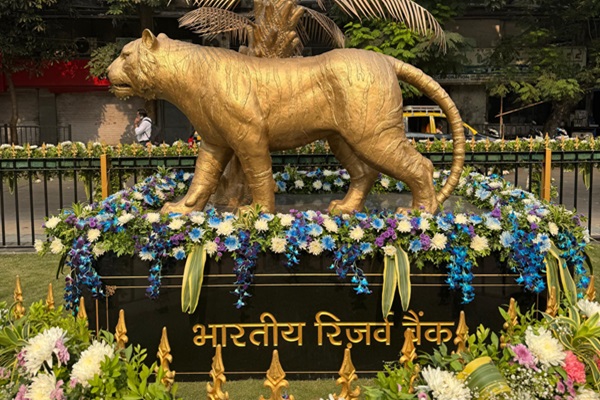.png)

Karan Mehrishi is an author and economics commentator, specialising in monetary economics. He is also the host of the Talking Central Banks podcast.
September 30, 2025 at 10:56 AM IST
The 2023 Silicon Valley Bank and Credit Suisse crises have revealed that government securities as backstops cannot guarantee protection during liquidity shortfall events, and that is a lesson for the Indian banking system.
Indian banks, although showing signs of resilience thanks to rigorous stress testing and robust regulatory checks, still require knowledge of official tools to safeguard themselves during emergencies. This is because the RBI’s current stand on its Lender of Last Resort, or LoLR, function remains unclear to this day.
To understand this better, we must consider India’s own banking history, especially before 1947 and how crises were managed by the RBI.
The Travancore National & Quilon Bank TNQ crisis of 1938 is perhaps a pivotal event in this context.
TNQ was formed after a 1937 amalgamation of Travancore National Bank and Quilon Bank and represented a complex operational mechanism that encompassed the jurisdictions of British India Territories and that of the Travancore Princely State.
The newly amalgamated bank, however, soon encountered perception problems, following which it faced bank runs. Despite the RBI recommending that the bank focus on building liquidity buffers, TNQ expanded its balance sheet rapidly, and in the process failed to build adequate reserve buffers. Within six months of starting operations as an entity, TNQ shut down operations in May 1938 and needed bailouts.
RBI performed its LoLR function under Section 17 and Section 42 of the RBI Act, 1934, to stabilise TNQ operations. Though the bank failed despite the efforts, the utilisation of the tools under these two sections is nonetheless an interesting case study even today.
While liquidity provisions under Section 17 followed standard protocols of cash against ‘eligible’ securities or government securities, the surprising part emanated from Section 42. As per the provisions of the latter, the RBI Act mandated commercial banks to maintain 5% of Demand Deposit, and 2% of Time Deposit equivalent with the RBI during normal times. In other words, these deposits were eligible for withdrawal during crisis periods.
For the depositing commercial banks, this translated into an insurance policy whenever they were short of cash in an emergency, such as the one faced by TNQ in 1938. Mandates under this Section were defined as ‘Statutory Deposits’ by the RBI Act of 1934.
Today, while there is still a bit of ambiguity about whether the Cash Reserve Ratio or the Statutory Liquidity Ratio can be considered a worthy replacement for the Statutory Deposits, the former makes a better case for itself.
This is because while the CRR is defined under Section 42 (1) of the RBI Act, 1934, as a tool to “regulate money supply and maintain financial stability,” the SLR is merely defined under Section 24 for “managing liquidity in the system.” Moreover, SLR is a later addition and came into existence only with the Banking Regulations Act, 1949.
In other words, the purpose of the CRR is more in line with the function of the Statutory Deposits to stabilise and maintain financial stability during times of need, and is similar to the reserve requirements now being utilised by the US Federal Reserve. RBI’s American counterpart defines such reserve requirements as an insurance policy for commercial banks, which can then access such funds whenever they have liquidity shortfalls. In the Indian context, why the CRR is now inaccessible to depositing commercial banks remains an open question nonetheless.
The Committed Liquidity Facilities is one such tool in the US and is increasingly becoming a popular Discount Window option for commercial banks. The facility allows commercial banks to access reserves during emergencies against collateral (mostly in the form of customer accounts and debt securities) committed to the Federal Reserve, along with paying a service premium during normal operations. This is similar to insurance premiums paid by individuals over a period of time, irrespective of a claim being made during an emergency.
Given that CRR is pre-placed with the RBI by commercial banks as part of the latter’s liability (being part of the liability side reserve money), the tool can be considered an effective facility during times of need as part of the central bank’s LoLR facilities. Since CRR is non-interest-bearing, the penalty itself should be considered as a premium that banks pay to the RBI for a service they might or might not seek in the future.
Nevertheless, unlike the Federal Reserve, the RBI does not define the true function of the CRR and its usage as an emergency funding arrangement during crisis time. This is despite the fact that CRR, just like the Statutory Deposits, is defined under Section 42, and there seems to be an element of ambiguity at play in this regard.
Therefore, the CRR has never been defined officially as a LoLR tool in the RBI’s arsenal. It is high time that the RBI declares the true intention of a reserve requirement that holds over ₹9 trillion, as a non-interest-bearing requirement on its balance sheet at all times.
It should be noted that currently, the only LoLR facility is the provision to dip just 2-3% into the SLR/ High Quality Liquid Assets Level 1 for accessing the Marginal Standing Facility at all times. Access to CRR, as part of official LoLR support, will definitely open an alternate channel of liquidity support during emergencies.
Such a declaration will go a long way in addressing liquidity asymmetries in the system, and better regulate the overnight call money market, assuring banking participants of the availability of regulatory help during times of need.




